The United States Government
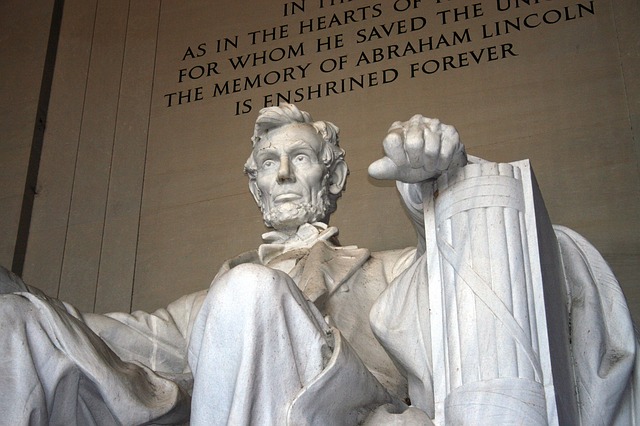 The United States began as a group of 13 Brittish Colonies. In 1776 the colonists won their freedom from Brittan. It took eight years for the colonists to decide on a form of government and leaders. The colonists were afraid of giving the government too much power. By 1783, the leaders of the colonies began creating a new system of government. The new government was outlined in the Constitution. The men who created the Constitution are known as the "founding fathers" of our nation. By 1788, the colonies had accepted the Constitution and Geroge Washington became our first President in 1789. The three branches of government established were the Executive Branch, Legislative Branch, and the Judicial Branch. Each branch is balanced and has certain roles and responsibilities so that one branch cannot get too powerful.
The United States began as a group of 13 Brittish Colonies. In 1776 the colonists won their freedom from Brittan. It took eight years for the colonists to decide on a form of government and leaders. The colonists were afraid of giving the government too much power. By 1783, the leaders of the colonies began creating a new system of government. The new government was outlined in the Constitution. The men who created the Constitution are known as the "founding fathers" of our nation. By 1788, the colonies had accepted the Constitution and Geroge Washington became our first President in 1789. The three branches of government established were the Executive Branch, Legislative Branch, and the Judicial Branch. Each branch is balanced and has certain roles and responsibilities so that one branch cannot get too powerful.
Executive Branch
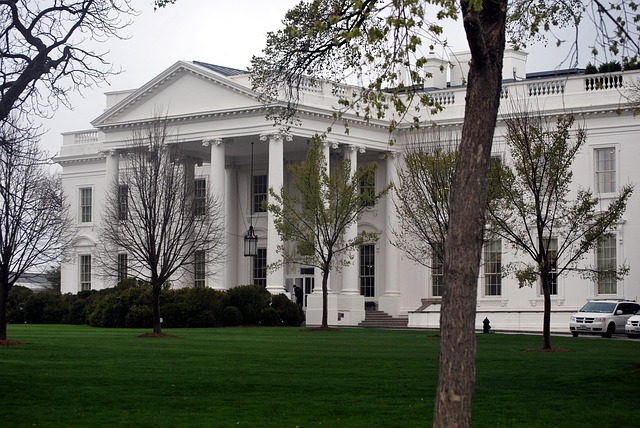 The President leads the Executive Branch. This branch carries out laws, vetos laws, directs the national defense, and directs the government. A President is eleceted every 4 years and can serve two consecutive, or back-to-back terms. A President must be born in the United Stated and be at least 35 years old. The same requirements apply to the Vice Presicent. Together they represent our country to the rest of the world. The President can make agreements with other countries, but these agreements have to be approved by the Senate. This branch is so large that it is divided into departments. The directors of each department, called secretaries, form a group called the Cabinet. Some departments have divided further to make agencies such as the FBI and the military. Each department has different responsibilities. The Department of Health makes sure the food you buy at the store is safe to eat. The Department of the Treasury prints our money. The newest is the Department of Homeland Security, and was created in 2002 after Sept. 11, 2001. This branch is overseen by the President and works in the White House.
The President leads the Executive Branch. This branch carries out laws, vetos laws, directs the national defense, and directs the government. A President is eleceted every 4 years and can serve two consecutive, or back-to-back terms. A President must be born in the United Stated and be at least 35 years old. The same requirements apply to the Vice Presicent. Together they represent our country to the rest of the world. The President can make agreements with other countries, but these agreements have to be approved by the Senate. This branch is so large that it is divided into departments. The directors of each department, called secretaries, form a group called the Cabinet. Some departments have divided further to make agencies such as the FBI and the military. Each department has different responsibilities. The Department of Health makes sure the food you buy at the store is safe to eat. The Department of the Treasury prints our money. The newest is the Department of Homeland Security, and was created in 2002 after Sept. 11, 2001. This branch is overseen by the President and works in the White House.
- President
- Vice President
- The Cabinet
- Departments, such as the Department of Education
- Boards and Commissions, such as the National Park Foundation
Judicial Branch
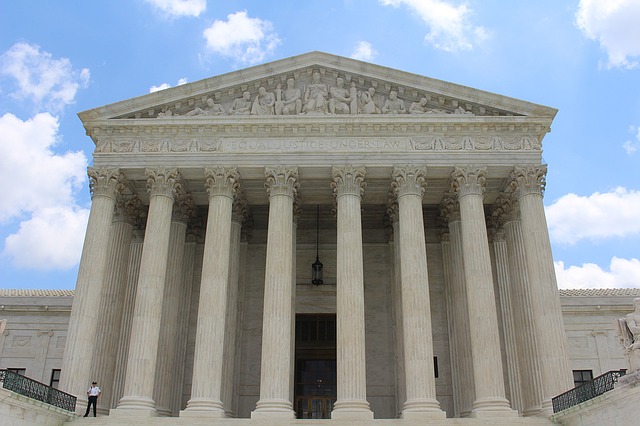 The Supreme Court, made of nine judges, leads the Judicial Branch. It is the most powerful court in the country. The nine judges are called justices. It is their job to review the laws and decide cases that involve states' rights. They ensure these laws agree with the Constutution. Justices hold their position in the Supreme Court for life. The President chooses the justices, but the Senate decides whether to accept or reject them. In this way, the executive and legislative branch keep check on the judicial branch. The Judicial Branch works in the Supreme Court Building, in Washington, D.C.
The Supreme Court, made of nine judges, leads the Judicial Branch. It is the most powerful court in the country. The nine judges are called justices. It is their job to review the laws and decide cases that involve states' rights. They ensure these laws agree with the Constutution. Justices hold their position in the Supreme Court for life. The President chooses the justices, but the Senate decides whether to accept or reject them. In this way, the executive and legislative branch keep check on the judicial branch. The Judicial Branch works in the Supreme Court Building, in Washington, D.C.
- Supreme Court
- Lower Courts, such as the District Courts
- Special Courts, such as the U.S. Tax Court
Legislative Branch
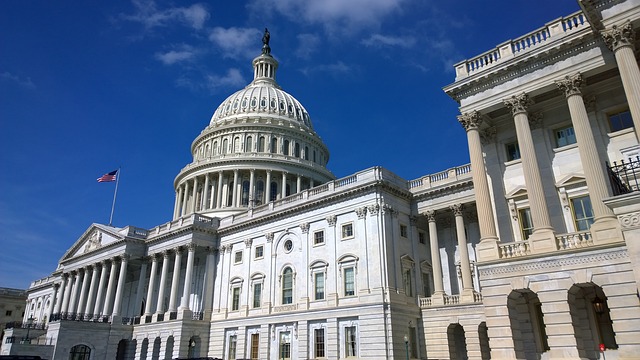 The Legislative Branch makes and changes laws and is called Congress. Congress is split into two groups called the House od Representatives and the Senate. The House includes 435 voting representatives, and the Senate includes 100 senators. These people make up Congress, and lead the Legislative Branch. Senators are elected by the people every 6 years and make sure the government takes care of the people in their state. Representatives are elected by the citizens of their state every two years. This branch makes and changes laws, then sends them to the President to approve or veto. To veto a law means to reject the law. They also collect taxes and can declare war. They work in the United States Capitol, and have to work together with the other branches of government to to their job.
The Legislative Branch makes and changes laws and is called Congress. Congress is split into two groups called the House od Representatives and the Senate. The House includes 435 voting representatives, and the Senate includes 100 senators. These people make up Congress, and lead the Legislative Branch. Senators are elected by the people every 6 years and make sure the government takes care of the people in their state. Representatives are elected by the citizens of their state every two years. This branch makes and changes laws, then sends them to the President to approve or veto. To veto a law means to reject the law. They also collect taxes and can declare war. They work in the United States Capitol, and have to work together with the other branches of government to to their job.
- U.S. Senate
- U. S. House of Representatives
- Congressional support organizations, such as the Library of Congress
Separation of Powers
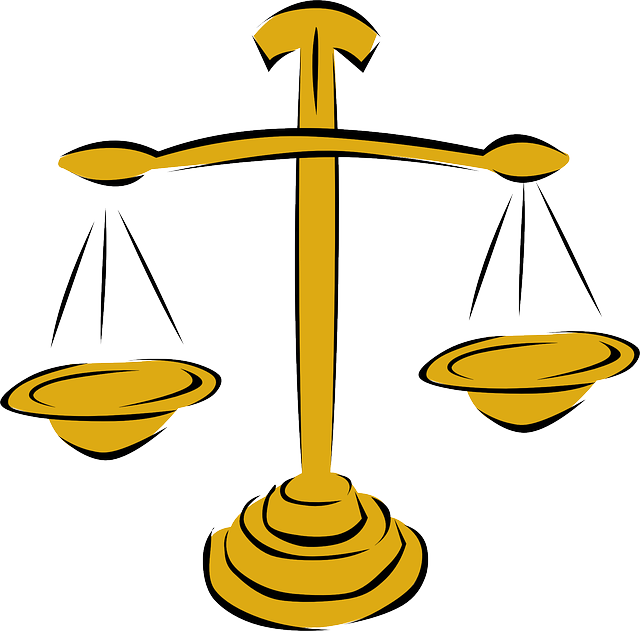 Each branch is assigned specific duties under a concept called "separation of powers." With the separation of powers, no one branch can take control. Instead, each branch watches over the other two. This system is called checks and balances.
Each branch is assigned specific duties under a concept called "separation of powers." With the separation of powers, no one branch can take control. Instead, each branch watches over the other two. This system is called checks and balances.
The Executive Branch can veto bills and call emergency sessions of Congress. It can also appoint Supreme Court justices and federal judges. The Legislative branch can impeach the President and can override a veto. It can also confirm and impeach judicial appointments, such as Supreme Court justices. The Judicial Branch can decide if a presidents acts are unconstitutional. It also determines if the laws made by the Legislative Branch are constitutional.
Quick Check - copy responses in your notebook or take the Google Quiz below.
- Where does Congress meet?
- In what building are laws made?
- Judges are called ___________.
- What Branch of government makes the laws?
- How long is a President term?
- Which branch appoints the justices?
- What is a veto?
- Which branch interprets the laws?
- Who can veto a bill that Congress passes?
- Which branch of the government decides if laws are constitutional?
Government Games and Activities
Kids.gov for Grades K-5
Government Games for Kids
Branches of Power Game
Congress for Kids Games
Written by D. Hankins
 The United States began as a group of 13 Brittish Colonies. In 1776 the colonists won their freedom from Brittan. It took eight years for the colonists to decide on a form of government and leaders. The colonists were afraid of giving the government too much power. By 1783, the leaders of the colonies began creating a new system of government. The new government was outlined in the Constitution. The men who created the Constitution are known as the "founding fathers" of our nation. By 1788, the colonies had accepted the Constitution and Geroge Washington became our first President in 1789. The three branches of government established were the Executive Branch, Legislative Branch, and the Judicial Branch. Each branch is balanced and has certain roles and responsibilities so that one branch cannot get too powerful.
The United States began as a group of 13 Brittish Colonies. In 1776 the colonists won their freedom from Brittan. It took eight years for the colonists to decide on a form of government and leaders. The colonists were afraid of giving the government too much power. By 1783, the leaders of the colonies began creating a new system of government. The new government was outlined in the Constitution. The men who created the Constitution are known as the "founding fathers" of our nation. By 1788, the colonies had accepted the Constitution and Geroge Washington became our first President in 1789. The three branches of government established were the Executive Branch, Legislative Branch, and the Judicial Branch. Each branch is balanced and has certain roles and responsibilities so that one branch cannot get too powerful.  The President leads the Executive Branch. This branch carries out laws, vetos laws, directs the national defense, and directs the government. A President is eleceted every 4 years and can serve two consecutive, or back-to-back terms. A President must be born in the United Stated and be at least 35 years old. The same requirements apply to the Vice Presicent. Together they represent our country to the rest of the world. The President can make agreements with other countries, but these agreements have to be approved by the Senate. This branch is so large that it is divided into departments. The directors of each department, called secretaries, form a group called the Cabinet. Some departments have divided further to make agencies such as the FBI and the military. Each department has different responsibilities. The Department of Health makes sure the food you buy at the store is safe to eat. The Department of the Treasury prints our money. The newest is the Department of Homeland Security, and was created in 2002 after Sept. 11, 2001. This branch is overseen by the President and works in the White House.
The President leads the Executive Branch. This branch carries out laws, vetos laws, directs the national defense, and directs the government. A President is eleceted every 4 years and can serve two consecutive, or back-to-back terms. A President must be born in the United Stated and be at least 35 years old. The same requirements apply to the Vice Presicent. Together they represent our country to the rest of the world. The President can make agreements with other countries, but these agreements have to be approved by the Senate. This branch is so large that it is divided into departments. The directors of each department, called secretaries, form a group called the Cabinet. Some departments have divided further to make agencies such as the FBI and the military. Each department has different responsibilities. The Department of Health makes sure the food you buy at the store is safe to eat. The Department of the Treasury prints our money. The newest is the Department of Homeland Security, and was created in 2002 after Sept. 11, 2001. This branch is overseen by the President and works in the White House. The Supreme Court, made of nine judges, leads the Judicial Branch. It is the most powerful court in the country. The nine judges are called justices. It is their job to review the laws and decide cases that involve states' rights. They ensure these laws agree with the Constutution. Justices hold their position in the Supreme Court for life. The President chooses the justices, but the Senate decides whether to accept or reject them. In this way, the executive and legislative branch keep check on the judicial branch. The Judicial Branch works in the Supreme Court Building, in Washington, D.C.
The Supreme Court, made of nine judges, leads the Judicial Branch. It is the most powerful court in the country. The nine judges are called justices. It is their job to review the laws and decide cases that involve states' rights. They ensure these laws agree with the Constutution. Justices hold their position in the Supreme Court for life. The President chooses the justices, but the Senate decides whether to accept or reject them. In this way, the executive and legislative branch keep check on the judicial branch. The Judicial Branch works in the Supreme Court Building, in Washington, D.C. The Legislative Branch makes and changes laws and is called Congress. Congress is split into two groups called the House od Representatives and the Senate. The House includes 435 voting representatives, and the Senate includes 100 senators. These people make up Congress, and lead the Legislative Branch. Senators are elected by the people every 6 years and make sure the government takes care of the people in their state. Representatives are elected by the citizens of their state every two years. This branch makes and changes laws, then sends them to the President to approve or veto. To veto a law means to reject the law. They also collect taxes and can declare war. They work in the United States Capitol, and have to work together with the other branches of government to to their job.
The Legislative Branch makes and changes laws and is called Congress. Congress is split into two groups called the House od Representatives and the Senate. The House includes 435 voting representatives, and the Senate includes 100 senators. These people make up Congress, and lead the Legislative Branch. Senators are elected by the people every 6 years and make sure the government takes care of the people in their state. Representatives are elected by the citizens of their state every two years. This branch makes and changes laws, then sends them to the President to approve or veto. To veto a law means to reject the law. They also collect taxes and can declare war. They work in the United States Capitol, and have to work together with the other branches of government to to their job. Each branch is assigned specific duties under a concept called "separation of powers." With the separation of powers, no one branch can take control. Instead, each branch watches over the other two. This system is called checks and balances.
Each branch is assigned specific duties under a concept called "separation of powers." With the separation of powers, no one branch can take control. Instead, each branch watches over the other two. This system is called checks and balances.